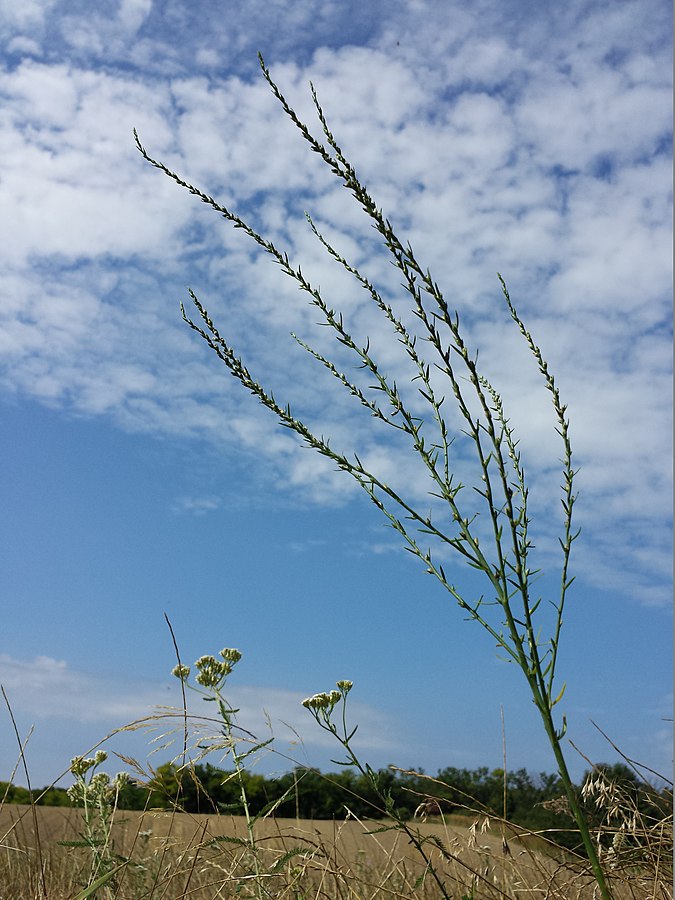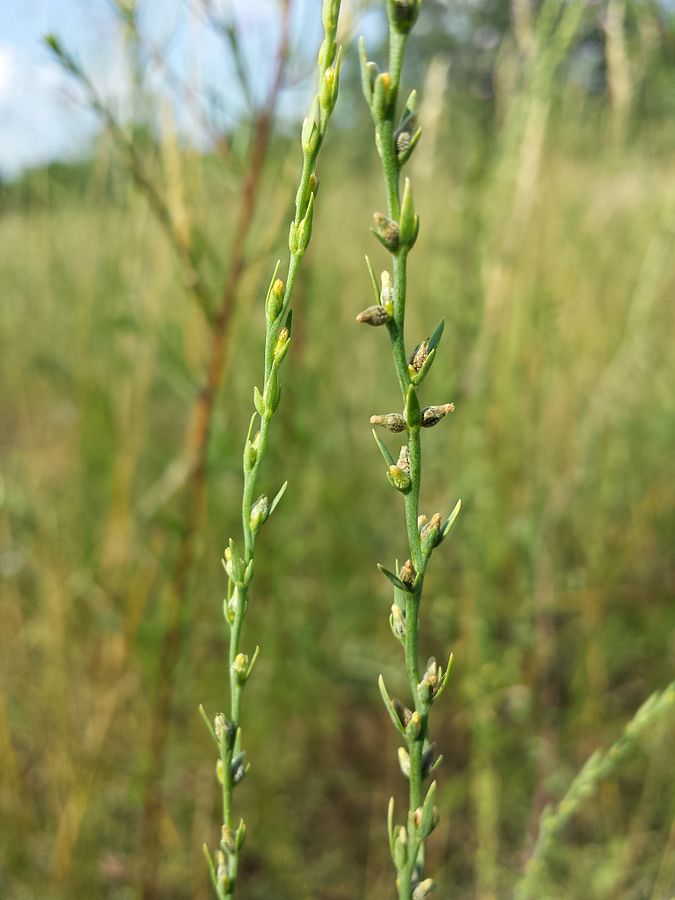Spurge Flax

Spurge Flax
(Thymelaea passerina)
Priority: - Prevent / EDRR
Tags: Agricultural
Identification and Reproduction
Identification:
- Spurge flax is a herbaceous annual plant that grows from a taproot.
- This plant is wiry and erect, growing from one main stem and often branching in the upper portion of the stem.
- Stems are green or yellow and will turn red in the fall.
- Leaves are stiff, alternate, narrow with a leathery texture. Leaves range from 8 to 25mm long.
- Flowers are greenish-yellow, small, lack petals and tubular. Individual flowers have four sepals and 8 stamens, held in two whorls of four stamens. Each flower has a pair of small bracts from white tufts of hairs.
Reproduction:
- Spurge flax reproduces by seed.
- Seeds are often spread by wildlife, off-roading vehicles and equipment.
- Seeds remain viable for 2 years.
Habitat & Ecology
- It is a common weed of dry soils.
- Often found in rangelands, dry pastures, railroads, floodplains and other disturbed sites.
- Goes unnoticed and can spread quickly. It blends in with surrounding vegetation and is difficult to identify.
Impacts
Social:
- It is unpalatable to livestock.
- Has a huge impact on the yields of grain crops.
Ecological:
- Spurge flax is an aggreesive plant and will grow vigorously.
Management
Prevention is a high priority for this species.
- Learn to identify this plant and report sightings.
- Refrain from moving unknown soil and plant matter.
- Ensure shoes, clothing, equipment and vehicles are free of seeds or plant parts prior to leaving an infested site.
Resources
Download the Washington State Noxious Weed Control Board's postcard send out for Spurge flax here.
Header photo (Stefan.lefnaer).




